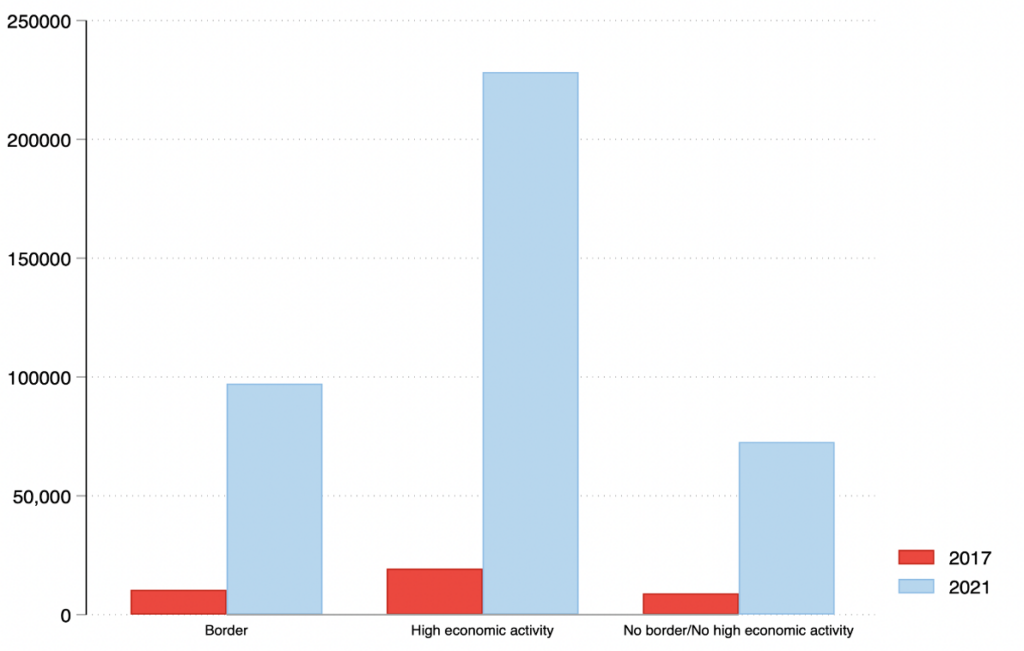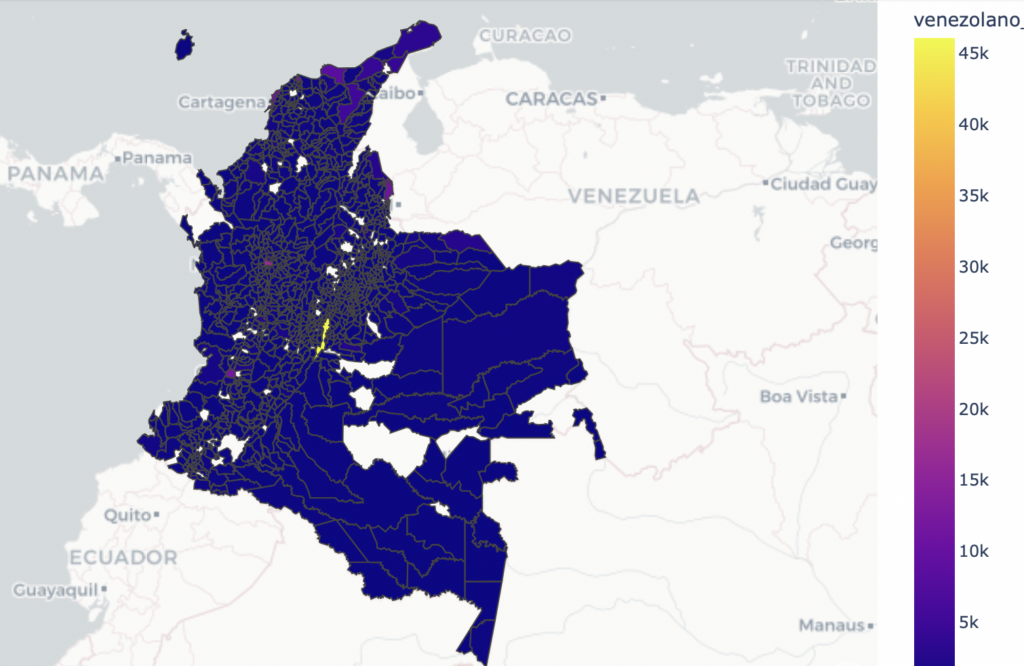September 25, 2023
Venezuelan immigrants in the Colombian educational system
By: Gustavo Canavire-Bacarreza, Daniel Cañizares, Camila Morales
Tags:
We are grateful to the Colombian Institute for the Evaluation of Education, without whose data and valuable support it would not have been possible to write this entry.
For several decades, Venezuela was among the top destination countries for Latin American migrants. People from different parts of the world, and especially from neighboring countries, moved to Venezuela in part due to its buoyancy and the high quality of life. However, since 2018 the coin flipped, with an increasing number of Venezuelans forced to flee their home in search of work, food, and education. Indeed, nearly half of the decline in school enrollment in Venezuela between 2018 and 2021 can be attributed to students leaving the country, [1] with significant consequences on the long-term outcomes of those migrants who cannot continue their education. As a close neighbor with strong cultural ties, Colombia has been the preferred destination of Venezuelan migrants receiving nearly 2.5 million people since (add year), out of which 36% are under 18 years old. [2] Using data from the integrated system of school enrollment (SIMAT) and the Colombian Institute for the Evaluation of Education (ICFES), it is possible to characterize the Venezuelan migration of students and their integration into Colombia’s educational system.
What does the data show? A country-wide challenge for the Colombian educational system.
The rise in migrants, coupled with expanded access to public services, has resulted in a steady and significant increase in the number of migrant children enrolled in Colombian schools. The provision of identification numbers (NES) for enrollment purposes may have contributed to this increase. As of 2021, nearly half a million migrants attend schools nationwide, accounting for roughly 5% of total enrollment. Venezuelan students are dispersed nationwide, with a high concentration in Colombia’s most economically active and most populated regions, along with a meaningful presence in the border regions. In 2021, Bogotá, the capital city, had twelve times the number of Venezuelan students it had in 2017. Antioquia, arguably the second most developed region in the country whose capital city is Medellin, experienced an even greater increase, with the population of Venezuelan students rising 21 times above 2017 levels.
Concentration of Venezuelan students across select geographical clusters of interest.


Source: Enrollment data from the Colombian Ministry of Education – SIMAT (2017 – 2021). Own estimations.
Elementary schools have experienced faster enrollment growth compared to middle and high schools.
Although the number of Venezuelan students in the Colombian education system has increased massively in all grade levels, there is a more pronounced concentration in early grades. In primary education, there is a higher proportion of male Venezuelan students; however, in subsequent educational levels this gender composition is reversed – in secondary and middle school more female students enter than male students. Arguably, this observation aligns well with a possible change in the opportunity cost of schooling that varies along gender and age dimensions, and that is particularly salient for students from more vulnerable socioeconomic backgrounds.
Enrollment of Venezuelan students across grade clusters.

Source: Enrollment data from the Colombian Ministry of Education – SIMAT (2017 – 2021). Own estimations.
Venezuelan students arriving in Colombia are more likely to enroll in lower-achieving public schools.
Venezuelan migrant students who immigrate to Colombia largely enter the public education system and live with families from low socioeconomic backgrounds. The number of Venezuelan students from poor households has increased by 1,100 percent in the last few years, while the number of their counterparts from more affluent economic backgrounds has remained steady. This same behavior is observed in the increase in public and private school enrollment. Most Venezuelan students tend to enter schools with lower achievement as measured by the national high school graduation exam, Saber 11. On average, this relationship holds for all subjects evaluated in Saber 11 — math, reading, and social studies.
Enrollment of Venezuelan students by category of the school.
Source: Enrollment data from the Colombian Ministry of Education – SIMAT (2017 – 2021). Own estimations.
Test scores of Colombian Students and Enrollment of Venezuelan Students.

Note: Binned school average of Saber 11 2021 test results for Colombian students and Participation rate of Venezuelan students in the school enrollment on 11th grade.
Source: Enrollment data from the Colombian Ministry of Education – SIMAT (2017 – 2021). Test Scores data from the Icfes. Own estimations.
What more can be done?
The data presented shows that the Colombian educational system’s efforts to absorb the large flow of student immigrants have been significant, with a large in-country variation. However, there is still much work ahead to ensure that migrant students, who are usually lagging behind, increase their opportunities without disregarding the learning needs of incumbent students. For Colombia, this could mean the following:
- Improving grade assignments for income Venezuelan migrant students, as they might experience inadequate grade placements.
- Preventing the concentration/segregation of Venezuelan students in lower quality schools, improving the allocation of students and promoting diversity within schools.
- Creating differential support strategies for this share of the student population, focused on leveling the academic performance of immigrant students.
These findings can be helpful for the Colombian government to allocate Venezuelan students to schools better and to improve the implementation of policies aimed at bringing equal quality education for Venezuelan incoming students.
2. https://www.icbf.gov.co/system/files/25042022_caracterizacion_nna_migrantes.pdf





